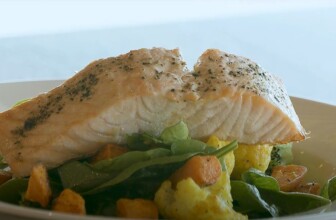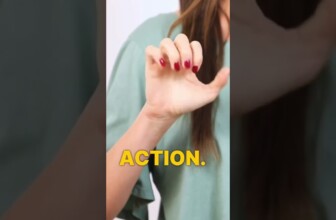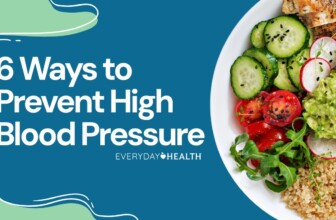Seasonal Affective Disorder and Winter Blues: Treatment Options: Light Therapy for SAD
Learn how light therapy can treat Seasonal Affective Disorder and winter blues. Discover effective SAD treatments in this Therapy in a Nutshell video.
Join Therapy in a Nutshell’s membership: https://courses.therapyinanutshell.com/membership
You'll get instant access to all 10 life-changing courses, live weekly Q&As, and a supportive community for just $27/month. Learn how to manage anxiety, process trauma, regulate emotions, and build lasting resilience so that you can live a deeply rich and meaningful life!
Around 20 percent of Americans experience seasonal affective disorder, which is a type of depression that is associated with changes in the seasons. In this video you'll learn what you can do to fight the winter blues.
Carex Aura Lamp (the light I use): https://amzn.to/3ny7IRu
Carex Daylight Classic Lamp (for more severe depression/seasonal affective disorder) : https://amzn.to/2KCBYwa
Looking for affordable online therapy? My sponsor, BetterHelp, connects you to a licensed professional from the comfort of your own home. Try it now for 10% off: https://betterhelp.com/therapyinanutshell
Learn more in one of my in-depth mental health courses: https://courses.therapyinanutshell.com/?utm_campaign=12212020&utm_medium=Description&utm_source=YouTube
Support my mission on Patreon: https://www.patreon.com/therapyinanutshell
Sign up for my newsletter: https://courses.therapyinanutshell.com/free-resources
Check out my favorite self-help books: https://kit.co/TherapyinaNutshell/best-self-help-books
Check out my podcast, Therapy in a Nutshell: https://tinpodcast.podbean.com/
Therapy in a Nutshell, LLC, and the information provided by Emma McAdam are solely intended for informational and entertainment purposes and are not a substitute for advice, diagnosis, or treatment regarding medical or mental health conditions. Although Emma McAdam is a licensed marriage and family therapist, the views expressed on this site or any related content should not be taken for medical or psychiatric advice. Always consult your physician before making any decisions related to your physical or mental health.
About Me:
I’m Emma McAdam. I’m a licensed Marriage and Family Therapist, and I have worked in various settings of change and growth since 2004. My experience includes juvenile corrections, adventure therapy programs, wilderness therapy programs, an eating disorder treatment center, a residential treatment center, and I currently work in an outpatient therapy clinic.
In therapy I use a combination of Acceptance and Commitment Therapy, Systems Theory, positive psychology, and a bio-psycho-social approach to treating mental illness and other challenges we all face in life. The ideas from my videos are frequently adapted from multiple sources. Many of them come from Acceptance and Commitment Therapy, especially the work of Steven Hayes, Jason Luoma, and Russ Harris. The sections on stress and the mind-body connection derive from the work of Stephen Porges (the Polyvagal theory), Peter Levine (Somatic Experiencing) Francine Shapiro (EMDR), and Bessel Van Der Kolk. I also rely heavily on the work of the Arbinger institute for my overall understanding of our ability to choose our life's direction.
And deeper than all of that, the Gospel of Jesus Christ orients my personal worldview and sense of security, peace, hope, and love https://www.churchofjesuschrist.org/comeuntochrist/believe
If you are in crisis, please contact the National Suicide Prevention Hotline at https://suicidepreventionlifeline.org/ or 1-800-273-TALK (8255) or your local emergency services.
Copyright Therapy in a Nutshell, LLC
—-
Music licensed from www.Bensound.com or Artlist.io
Images from Freepik.com (premium license), Pixabay, or Wikimedia commons
Happy winter solstice everyone. Today it's below freezing, but I still wanted to come
outside, because you just gotta get outside in the winter. In the northern hemisphere, December
21st is the darkest day of the year. The sun shines for the least amount of time, and the
night is the longest, and every day, from here on out, is going to have about 90 more seconds
of daylight. So little by little, the northern hemisphere is going to get lighter, and brighter,
and before you know it, summer will have arrived, and I like to think of that as analogy for our
lives. Little changes like that one new skill, or one new way of thinking, just like those
90 extra seconds of daylight, that can create a huge difference over time in our lives. Now
lets leave that optimism behind for a minute, and talk about how crappy winter is. In
the clinic I work at we see some interesting trends, and one of them is the fact that from
June until August, we have a relatively lower number of clients, and in January through March,
we see a lot more people who are really struggling. So in this video you are going to learn all
about seasonal affective disorder, how the seasons impact mood, and what you can do
about it, and were also going to talk about how seasonal affective disorder can surprisingly
impact you during the spring and in the summer. This video is sponsored by Better Help, where
you can get professional, affordable, liscenced counseling from the comfort of your own home.
If you check out the link in the description, you can sign up for services where you can
start seeing a counselor really soon, and they can work with you through video chat, or through
messaging, and other ways, to help you find new ways, and new strategies, to deal with the difficulties that
you're facing. Now, we all know, 2020 has been a little bit difficult, to say the least, and
I think we can all use a little bit of extra support right now. I was talking to one of my
friends, she had signed up for Better Help, and she said she had a really good experience
with it, and that the counselor actually reached out to her so much through the messaging app,
that she got a little bit worried, she actually told the counselor ‘it's ok you take a day off
you know'. So if you'd like to get a little extra support, go ahead and check out the link in the description
to learn more about Better Help, and what kind of services they can provide you. Seasonal affective disorder
is a type of depression that's associated with the changes in the seasons, and it also
has the clever acronym S.A.D. It's also called winter blues. So these symptoms often start
in the fall, and keep going through winter, but a lot of people don't notice the cumulative
impact on them until the middle of winter. With winter seasonal affective disorder, people
feel less energetic, and more moody, and they have a lot of symptoms that are similar to
depression. It can look like loosing interest in activities you once enjoyed, feeling sluggish, or
tired, having problems with sleep, feeling hopeless, gaining weight, having appetite changes, and
specifically in the winter, cravings for more food, especially high carb foods. Now around
20% of Americans, that's like 65 million people, experience seasonal affective disorder. This
disorder impacts people who live closer to the poles, so closer to the North Pole, or the
South Pole, because the amount sunlight varies there more dramatically with the seasons than
near the equator. Now I'm from Cache Valley Utah, where we only get about 9 hours of daylight
on winter solstice. So, that means that if you work indoors, and you go to work at eight, and you
get home at five, you won't even see the sun peaking out from behind the mountains. Temperatures
often hover below freezing for weeks, and the air quality is sometimes the worst in the whole
country. So long story short, winter can be pretty miserable, and that's not just for me,
in one study 85% of people with mood disorders, like depression, said that their symptoms got
worse during the winter months. Now an interesting thing is that most people don't know that
seasonal affective disorder also impacts some people in the spring. Some people feel depressed,
have trouble sleeping, they loose weight, but it's common for them to feel agitated, and anxious,
to feel a lot more energy, almost manic at times. This is most likely to happen with people
with bipolar disorder, where spring and summer can bring on mania, and fall and winter can
bring on, you know, a time of depression, or low mood. If you've read the book Educated
by Tara Westover, the author talks about her father, who showed these symptoms of bipolar
disorder. Now, her family lives about 40 miles north of where I grew up, and my mom occasionally
runs into her mom in town. In the book, Tara twice recounts the story of her father slipping
into deep depression during the cold Idaho winters, and to manage that, their family would
drive south to Arizona, and the dad would just like lay on the porch and bask in the sun for hours
every day, and then eventually he got his energy back, and then they would drive back to Idaho,
but if you've read the book, on their drives back to Idaho, the father was impatient,
reckless, and irritable, and he may have even felt invincible. Now, these are all symptoms
of mania, and on both of those drives back they got into really bad car crashes. Both
the depression during the dark winter, and the intense energy he felt after his exposure
to sunlight, are probably due to how light exposure changes brain chemistry. The light that enters
our eyes triggers our brain to produce melatonin, and serotonin. Serotonin is a neurotransmitter
associated with happiness, sleep, digestion, sex, and a bunch of other things, and our skin
has the ability to produce serotonin when sunlight hits it, and I think that's one reason
why taking a mid-winter trip to the beach feels amazing. Now, for me, during the horrible
winters in cache valley I used to always travel south in February for a sunny trip to St. George.
We'd go climbing, and just a little bit of sunshine, and even like 50 degree days, just like felt amazing.
If you wanna learn more about how sunlight impacts the brain, and impacts mood, and serotonin
levels, go ahead and check out my other video on light therapy for non-seasonal depression.
But anyways, back to seasonal affective disorder. In the winter, when there's less light, people
tend to feel depressed, they tend to have low energy, and to feel down, but in the spring,
some people end up feeling more energy, and agitation. Spring seasonal affective disorder
is often overlooked as a contributing factor to mental health issues, and suicide rates
are at the highest right at that transition from winter to spring, when people have been
at their lowest, and then they start feeling more energy, and agitation. So, this is interesting,
because it's kind of similar to what we see when people start taking antidepressants.
Now modern society dosen't allow for natural patterns. I think sometimes we get this idea
in our head that our bodies, and our minds, are out to get us, that we're just, you know,
screwed up people, and we have to fight all these negative impulses, and the instincts that
we have in order to overcome them. Now in my experience, I've found that's its generally
more helpful to work with our drives, and our instincts, and our emotions, and to channel
those into positive directions, than to fight them. So I genuinely believe that we, and our
bodies, and our minds, are inherently good, and that the things that stem from them are functional
at their core. We just tend to sometimes get in the way of those. So, for example, if you
check out the symptoms of seasonal affective disorder, it's things like oversleeping, craving
food, gaining weight, these are all perfectly functional drives, and behaviors, if you're
a cave man right? If survival of the species, or your family is important, then the only
way for our ancestors to survive the scarcity, and cold of winter, was to build up a fat reserve,
and to sleep through the long, cold nights, and to just hang out in your tiny hut during
the short cold days. If you had tons of energy, and excitement during those months of confinement,
you may drive yourself crazy, or drive other people crazy, not to mention burning tons of
calories that you didn't have the food reserves to replace. Spring seasonal affective disorder
can also serve a function. That's a time to have tons of energy, agitation, time to get those
seeds in the ground, time to loose that winter weight, right, get rid of that hibernation store
you were keeping in your mid-section. All of these “symptoms” served an excellent survival
function before the days of indoor heating, and nine to five work days year round. Basically,
what it comes down to, is if we were allowed to hibernate during the winter, and live outdoors,
and work, and sleep following a more natural schedule, then we might not have as big of
a problem with seasonal mood disorders, but our modern society, and work, and school schedules
don't really allow for that, and since most of us can't afford a trip to the beach, or
we're all locked up during this global pandemic, one of the ways that you can treat seasonal
affective disorder is through light therapy. Bright light therapy is when you use an artificial
light to mimic the sun, this helps your brain, and your body, produce more serotonin, and melatonin.
Light therapy can help people fall asleep more easily at night, and feel happier, and
more energized during the day. Light therapy has been shown through rigorous research to
be very effective, and it has shown to be as effective to treating non-seasonal depression
as anti-depressants. It's also consistently been shown to be really effective at treating
seasonal affective disorder. It's also relatively inexpensive, but it's not usually covered by
insurance. Now this winter, I've tried light therapy for the first time, I've been doing
it for about six weeks, and I have actually noticed a huge difference in my mood, and energy
levels. After about two weeks of doing light therapy, I was actually feeling like a little
bit too energetic, and I needed to take a couple days off, and kind of tone back how many minutes
I was doing every day. Now, I just do like ten minutes a day, and it really does make a difference.
So, I would really recommend choosing a high quality therapy light. Now Carex is not sponsoring
this video, they sponsored one of my other videos, they sent me a therapy light, and I actually,
I loved it. So I would recommend their lamp even without a paid promotion, or any thing
like that, and you can check out the link in the description. You don't have you buy that
lamp, but what you're looking for is something that has 10,000 lux, at a comfortable distance,
its got an angle above the eyes, it's a very large area, so you'll see a lot of cheap
lights on amazon that are really small, and they sit on your desk, and those are probably
better than nothing, but there're not as effective as the large lamps that come from a downward
angle. So that's the kind of lamp that I recommend getting. I'm also going to encourage you to
work with your doctor before trying light therapy, but it is something you can do at
home, and just quickly, to tell you how to do it, it's best if you do it right after you
wake up, you wanna be consistent, it takes a little bit of time for the effects to add up,
you just do it, you know, fifteen to thirty minutes every morning, you don't need to stare straight into
the light box, you can just put it at your table, or your desk while you're working, or
putting on makeup, or eating your breakfast. It's also really important to start your
sessions around the same time every day because what you're doing is help reset
your circadian rhythm. The other thing I recommend is that you just kind of keep track of your treatment,
and your moods, so that you can notice what's working, and what isn't working, and the other
real concern with light therapy is that sometimes light therapy can trigger mania. So if you
have bi-polar, or if you've had manic episodes in the past, I definitely recommend talking
with your doctor to make sure it's a good choice for you, and light therapy isn't the
only treatment for seasonal affective disorder. Building healthy lifestyle is essential to
managing your mood anytime, but especially during the winter. So some other treatments for
seasonal affective disorder include: Medication, so, medications including ssri's can be effective
at helping improve mood in a lot of different ways. Exercise, this is always good for the
mood, and for the body. Therapy can be helpful, it can help you explore how your thoughts, and
your actions, may be contributing to your low mood, and you can learn some new skills to
manage, and combat mood disorders, and, you know, therapy has been shown to be effective at
treating seasonal affective disorder even with just a few sessions. Another really important
thing is socialization. In the winter people tend to spend less time together you know,
you aren't outside doing fun things together, or running into your neighbors while cutting
the lawn, or whatever. So it's, you know, whenever possible, I know its really hard right now,
but do what you can to get some socialization in right? Whether it's a play group with other
moms, doing zoom meetings, or zoom games together, or even just gaming together. I know it's
hard, but it's still really important to find a way to see friends. Another thing to consider is vitamin
D. Most Americans have low vitamin D levels, and that is associated with depression. Your
body uses sunlight to metabolize vitamin D, and those levels tend to drop in the winter,
but there are mixed results about whether supplementing with vitamin D is effective,
or not, so I do recommend working with your doctor to explore that option. Another thing
you could consider is see if you can adjust your schedule to get a little bit of outside
time when the sun is shining. So, if you generally work from eight to five, you could
try shifting your work schedule a little bit forward, or a little bit backwards, so that you can
get some sunlight, and it's best if you can get some sunlight in the morning, that actually
helps your brain have more energy, and be a little bit happier. So if possible, you know, maybe you can bump your work back to nine or ten, and then work a little later in
the evening, but see some sunlight in the morning. Another really important skill I believe is
learning how to dress for winter. If you know how to wear layers, and you know how to
wear the right amount of clothes, then you can still do a whole lot of things even when
it's cold, or wet, or dark. My husband moved from California to Utah, and in California
it's like generally t-shirt weather like nine days out of ten, if not more, right, and he
just basically felt like when it's freezing outside you just can't go outside, and, you
know, I really believe that if you learn how to dress, and what to wear, you can have
a really good winter experience. So you could buy a jacket like mine, that's like a sleeping
bag. I mean, I like it. So things like good boots, socks, a hat, and thermal underwear, can really
make a world of difference, wearing layers when you are outside, can make almost any weather
accessible. My dad goes biking even in the middle of the dark freezing winters. Some simple
changes like light therapy, exercise, learning how to dress for cold weather, can make a huge
difference. Okay, I hope that's helpful, I hope you all have a lovely winter, and don't whine
about it as much as I do, and find a way to make it a good one. Thank you for watching,
and take care.
#Seasonal #Affective #Disorder #Winter #Blues #Treatment #Options #Light #Therapy #SAD
source











Improve your mental health with the free course, https://courses.therapyinanutshell.com/grounding-skills-for-anxiety-stress-and-ptsd
It’s amazing how quickly I feel bad when the time changes to standard time. It is brutal.
I only care about being awake for Thanksgiving, Christmas Eve, and Christmas. Other than that I’d like to hibernate 😅
At 2:45. SADS peaks for me in the fall. I think it has something to do with decreasing hours of sunlight. When January rolls around, that's when I feel relief. Right now it's October 28th 2025. I am climbing the walls
I Wonder why i got it ever never felt it before ..
Thank you for sharing this video I have the seasonal depression and I've had it for 20 years and I got help 20 years ago at 33 I live in northern Indiana and it's very uplifting and I'm just grateful I watched your video on YouTube and really listen to what you had to say with some good advice and resources so thank you for sharing it's greatly appreciated
I live by the beach so I can experience this throughout the year. Even in July when it’s grey and gloomy the first half of the day. It’s torture.
I haven't been affected as strongly as I am being affected now. I barely got out of bed, I sleep so much, I do nothing all day. Working my day job is getting so hard
The fatigue is the absolute worst for me. Hard to open my eyes.Anyone else? Its the actual cold and not the lack of light for me that does it.
I'm gonna keep it legit. I don't have seasonal depression, I have seasonal rage. Every January- April, I'm fed up and yell a lot, angry everyday. I'm too petite to freeze to death half the year but too poor to move.
I swear I hate Nov-Mar. I literally am the worst person to be around. I feel like I don’t wanna wake up for anything until April-Oct. It’s the worst.
Moved from portugal to belgium for college💀 No more words need to be said
Thank you so much for sharing your knowledge. I bought the Carex Aura Lamp today! Thank you!!
Its the January and freakin febraury that SUCKS!
❤
Is it dangerous to look into those lights. Should I wear sunglasses?
I get really depressed right after Christmas it tends to last until March
one video and im already CRUSHING on you
I get it in the summer aswell in england were lucky if we get a blue sky for one full week
Anyone else like dark, cloudy, and rainy days? Those days make me feel the opposite of depressed lol
Its dark, and raining season. Im not a depressed person but i noticed i feel down, unmotivated and all things negative when the season is looking over.
I never feel sadness like this before I used to live in a very sunny state this is my second winter here is a small beautiful city people is great and kind but man winter 🥶 is been hard for me so I’m going back this spring to the sunny state !
You sound very upbeat and that made watching the video positive for me. I just bought a therapy light and am looking forward to doing better this year. Thanks!
Hi I currently live in Phoenix, AZ and I still experience "SAD" a bit during the Winter but not as bad as when I lived in Northern California where it would get grey and rainy. So even in AZ when the days get shorter and we get a few cloudy days I feel a bit down. All that being said, I'm grateful that I don't live where it snows in the Winter as I don't think I could handle it. At least here I can go outside and soak up some sun when I need to and it helps. Also AZ doesn't roll the clocks back in the Fall which I am so thankful for. When I lived in NorCal every Fall we would change the clocks back and it would start to get dark at 4:30 pm – that was really hard for me.
Great information but one thing everyone always misses is astrology
People born in Summer have extreme seasonal depression
I was born on the summer solstice
So winter is war
Bipolar is related to people born on the cusp
So this is a super power if overcome
But if not worked on you have both energies working against you
I am unsure if what I have is bipolar depression or sad but it did start in September